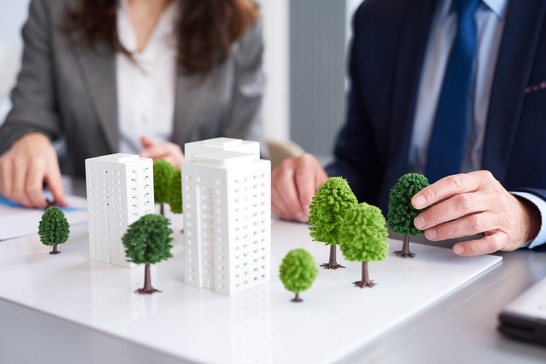
Imagine being within a house that breathes along with its surroundings. A structure that does not battle nature but collaborates. It collects rainwater like a leaf. It cools itself like a cave. It heats its spaces with sunlight. It produces food on its roof and sends energy back to the grid. This is not tomorrow’s architecture. This is sustainable construction, and it is becoming the cornerstone of property today.
A Change of Foundations
Until recently, architecture has been determined by climate and culture. One used what one had. Adobe in deserts. Timber in forests. Stone in mountains. And then there was the industrial age. Steel, concrete and mechanical systems came, and we no longer listened to the land. We constructed towers of glass in deserts. We air-conditioned them with fossil fuels. We insulated ourselves from the very world we inhabit.
Now the world is reminding us that it exists. Cities are warming. Seas are rising. Energy is stretching. The climate emergency isn’t knocking. It’s already in. Architects and developers are being asked to do more than construct. They need to construct better.
What Is Sustainable Building?
Sustainable building is not a design style. It is a state of mind. It is about creating spaces that serve today’s needs without harming tomorrow. It is about being smart with resources, minimizing waste, and designing environments that benefit both people and planet.
These are the guiding principles:
Energy Efficiency: Less to do more with less energy. Passive design principles that utilise natural light, shade and air flow. Smart systems that can learn and adapt. Renewable energy like solar and wind power that substitute fossil fuels.
Material Integrity: Selecting materials that stay longer, go less distances, and cause less harm. Bamboo that can regrow in months. Recycled steel that conserves mining. Rammed earth walls that last for centuries.
Water Wisdom: Greywater reuse systems, rain harvesting, and minimized consumption. Native, drought-resistant landscaping. Conservation-oriented plumbing without sacrificing comfort.
Health and Wellbeing: Psychologically and physically healthy spaces. Fresh air. Natural light. Acoustic well-being. Biophilic elements reconnecting us to the natural world. Because buildings do not just contain life, they should enrich it.
Adaptability: Designs that change over time. Spaces that are flexible to need. A warehouse is a school. A garage is a studio. Sustainability isn’t being green. It is being smart and able to bounce back.
Stories from the Field
Consider Singapore’s Oasis Hotel Downtown, enveloped in a green vertical garden that cleanses the air and air conditions interiors. Its red lattice is more than an architectural detail. It is an expanding skin that welcomes birds, bees, and breezes.
Or visit the Bullitt Centre in Seattle. A six-story office building that generates its own power. Harvests and filters its own water. Even composts its own garbage. They say it is the greenest office building in the world. But the real point is that it is a blueprint for what office buildings can and should be.
And then there is the BedZED development in London. A zero fossil energy development constructed in the early 2000s. It aimed to demonstrate that affordability and sustainability can coexist. Twenty years on, it continues to motivate planners around the world.
Why It Matters in Real Estate
For developers, sustainability is no longer a novelty. It’s a requirement. Green buildings save on operating costs, yield higher tenant retention, and earn higher resale values. As governments impose stricter environmental codes and as consumers become more aware, investors in sustainable design today are not only being responsible. They are being smart.
More significantly, architecture is a public act. Each building gives form to the world, affects how people behave, and leaves a legacy. The decisions of design and development resonate for generations.
What the Future Holds
The real estate future is not only smart. It is sustainable. Cities will develop upward and inward. Materials will be circular, i.e., they will be reusable in perpetuity. Buildings will communicate with one another, exchange energy, and adapt to the climate in real time. Nature will no longer be excluded. It will be included.
Envision buildings that purify the air like forests. Streets that produce energy as humans walk. Houses that provide for those who live in them. Offices that mend burnout. These are not fantasies. These are design challenges in search of solutions.
A Call to Young Architects and Builders
To the students drawing their first-floor plans. To the interns designing in studios. To the builders laying foundations and the thinkers making policy. You are not only building buildings. You are crafting the narrative of how we inhabit this world.
Sustainable architecture is not something to mark on a list. It’s a journey to take. One in which beauty intersects with responsibility. One where innovation benefits mankind. One where each design is an opportunity to do good.
Let your next project breathe with intention.
Conclusion
The future of real estate development lies in green building practice. It is an evolving practice that combines the wisdom of centuries-old architecture with the ingenuity of cutting-edge design. It is the design of harmony, balance, and hope.
You have the power, whether you’re sketching lines or making choices, to create spaces that feed people and planet alike.
The plan is prepared. The materials are familiar. The urgency is real. It is time to construct wisely.
